Foreign Exchange Rates 1913-1941 #4: Britain Leads the World Into Currency Chaos
April 27, 2014
We’re continuing our examination of currency histories in the 1913-1941 period.
April 20, 2014: Foreign Exchange Rates 1913-1941 #3: The Brief Rebuilding of the World Gold Standard System
April 6, 2014: Foreign Exchange Rates 1913-1941 #2: The Currency Upheavals of the Interwar Period
March 30, 2014: Foreign Exchange Rates 1913-1941: Just Looking At the Data
As before, there’s a notation in the data that “rates are nominal for at least five days during the month,” which I am calling “capital controls.” There were no doubt various forms of capital controls before and after this as well.
Germany:
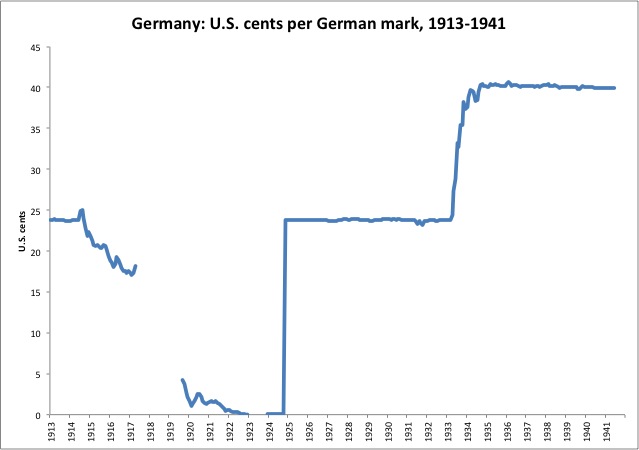
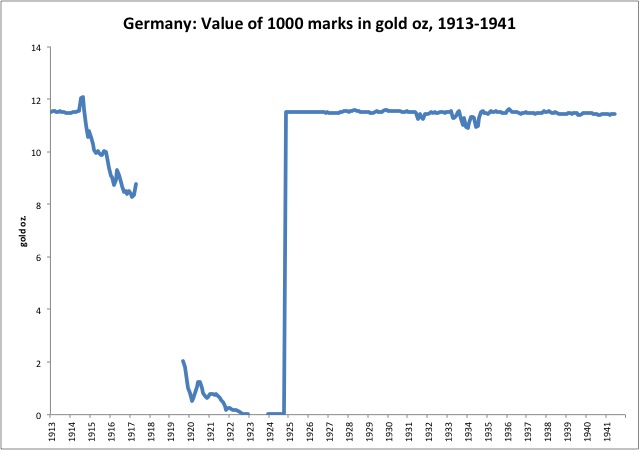
Germany had hyperinflation after WWI, which was resolved by the introduction of the Rentenmark at the prewar parity in November 1923. A new gold mark was introduced to replace the rentenmark, also at the prewar parity, in 1924. Germany did not devalue in the 1930s, although I think quite a lot of capital controls were applied beginning in 1931. The notation regarding “nominal” rates begins in September 1939.
Greece:

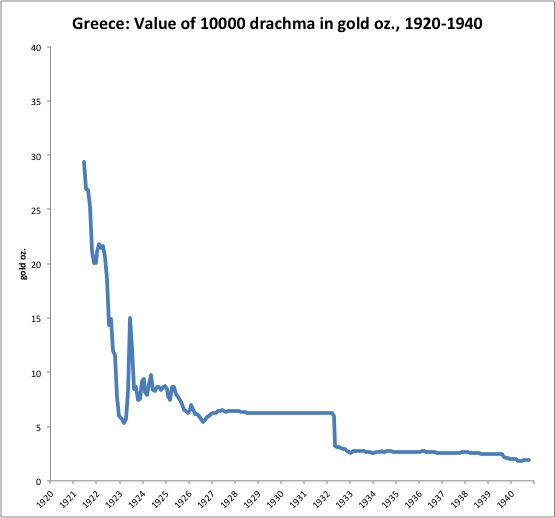
Greece had a huge loss of currency value during and after WWI — a mild hyperinflation. The second chart shows only the drachma/gold ratio after 1920. Greece devalued in early 1932, a few months after Britain. Capital controls (“nominal” rates) begin in October 1936.
Hong Kong:
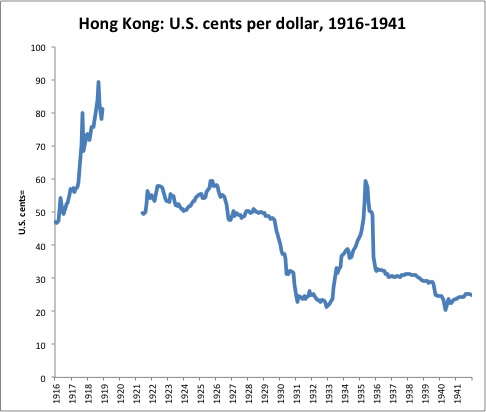
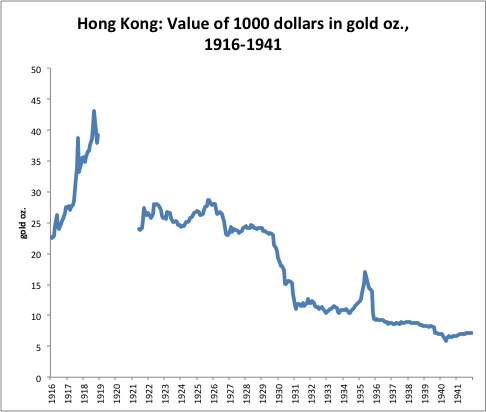
The Hong Kong dollar’s history is interesting. I’ve long looked for some comparator to show the value of the U.S. dollar and British pound vs. gold during the WWI years, when capital controls produced “nominal” figures in my dollar/gold price data. Maybe the Hong Kong dollar’s rise vs. the U.S. dollar shows the decline in the U.S. dollar’s value during that time. However, the Hong Kong dollar does not seem linked to gold very reliably at any time during this whole period, so it is probably not such a good measure. The HKD begins to lose value in late 1929, and is never particularly stable.
Hungary:
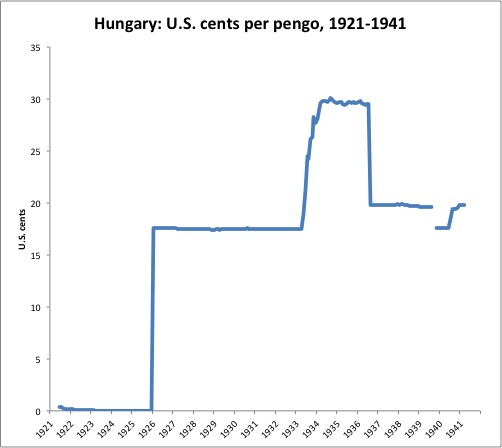
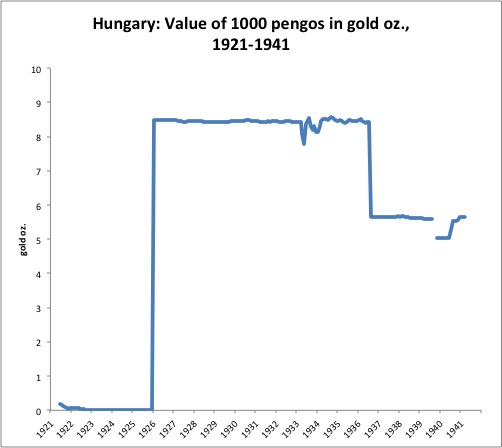
Hungary used the “crown” before 1925, and the “pengo” afterwards. Hungary apparently had hyperinflation after WWI, with the crown’s value stabilized around March 1924. The pengo was introduced at the beginning of 1926, at a new, higher value. Hungary devalued in August 1936. Capital controls begin in April 1933.
Italy:
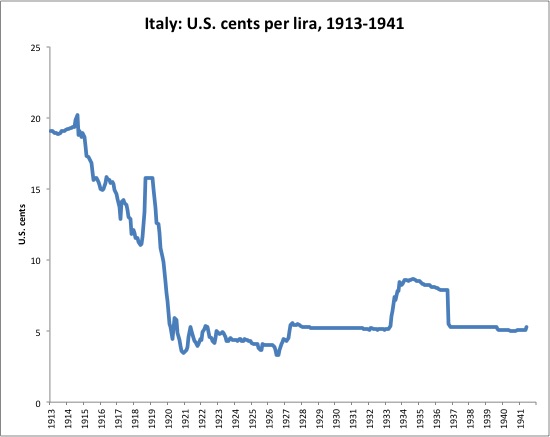
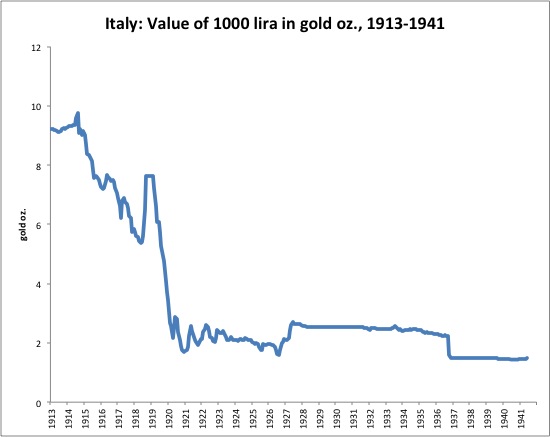
Like the French franc, the lira lost a lot of value during WWI and soon afterwards. It was repegged to gold in 1927, and devalued in 1936, along with France. Capital controls begin in June 1940.
We’re making nice progress here. Perhaps there is no particular single conclusion to make of this, but I find it helpful to look at real data and real history, rather than rely on someone else’s interpretation. That someone else probably didn’t look at this stuff either. The 1930s were known as a “currency war” period, so it is nice to get an idea of what that actually meant.

